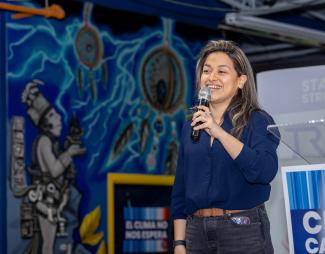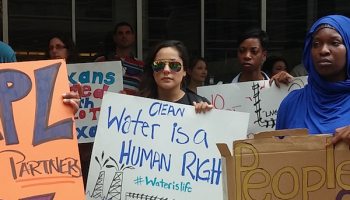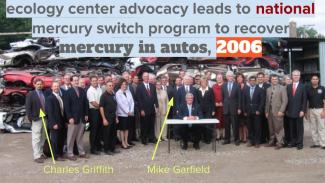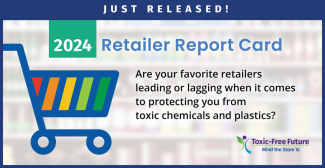Powering a Just Climate Future: The Fight for EV Adoption in Michigan
By Trilby MacDonald, Ecology Center Writer
Trump Moves to Undo Climate Policies, But Barriers Remain
President Donald Trump has signed an executive order to withdraw the U.S. from the Paris Climate Agreement — his second such action — while aggressively pushing for fossil fuel expansion and dismantling Biden-era climate initiatives. Declaring an "energy emergency," his administration is fast-tracking oil and gas drilling, including in protected areas like the Arctic National Wildlife Refuge, and seeking to roll back federal support for electric vehicles and clean energy.
However, despite Trump's "drill baby drill" rhetoric, significant barriers prevent sweeping changes to U.S. energy policy. Slow government processes, market forces making new fossil fuel projects less profitable, and legal challenges all limit immediate action. Additionally, the Inflation Reduction Act (IRA) continues to provide substantial economic benefits, particularly to Republican-led congressional districts, making it politically challenging to reverse. Though clawing back committed federal funds or undoing congressionally passed legislation requires an act of Congress, the Trump Administration and its allies in the Congress appear to be moving ahead with those plans.
Progress for EVs Under Biden

The transition to electric vehicles (EVs) surged ahead under the Biden administration. The number of public charging ports more than doubled from 2021 levels, with nearly 1,000 new stations coming online weekly. This rapid expansion has made EVs more accessible to consumers nationwide. Biden’s policies also drove record-breaking EV sales. In 2023, 1.5 million passenger EVs were sold in the U.S., a 50% increase from 2022. Over a vehicle’s lifetime, an EV owner can save between $18,000 and $24,000 on fuel and maintenance
The transition to electric vehicles now faces significant roadblocks. The Trump administration has rolled back key policies supporting clean transportation. The administration revoked a federal goal for 50% of new car sales to be electric by 2030, froze funding for EV charging infrastructure, and proposed eliminating the $7,500 federal tax credit for EV buyers. Further, Trump ordered his agencies to roll-back federal emission and fuel economy standards, and moved to rescind state emission waivers that allow states like California to set stricter pollution standards. This will slow EV innovation and allow gas-powered cars to remain dominant. These actions prioritize fossil fuels over clean energy, threatening progress toward a sustainable transportation future. Notably, Tesla, with its established market presence and domestic manufacturing, could gain a competitive edge as rivals face increased costs and reduced incentives.
Despite these federal setbacks, the push for EV adoption continues at the state level, and Michigan stands to benefit from leading the charge.
Michigan’s Stake in the EV Transition
As the heart of the U.S. auto industry, Michigan has more to gain — or lose — than any other state in the EV transition. Auto manufacturing is Michigan’s top industry, employing 18% of the nation’s auto workforce. While Michigan leads in EV-related jobs per capita, other states are quickly catching up, while China and the European Union lead the world in EV production and adoption. Michigan needs federal investment to stay at the leading edge of the global transition to EVs.

Gabriela Santiago Romero is the council member for District 6 in Detroit, an area that has high unemployment and is heavily polluted by truck traffic. She is angry that programs to build battery plants and incentives to transition diesel powered trucks to EVs are now on hold. “There were a lot of opportunities to think about how we turn over from old fossil fuel to new energy, and that is at a standstill right now,” she laments. “So cutting back on that is also scaling back on job opportunities for Detroiters.”
Detroit is continuing to invest in the EV transition, using a variety of funding sources to install chargers in key locations like parks and public lots where home charging isn’t an option. Community-based EV car-sharing programs are also expanding access, ensuring that clean transportation benefits all residents, not just those who can afford a personal EV.
Governor Gretchen Whitmer has recognized the urgency of staying competitive. The Michigan Healthy Climate Plan (MHCP) aims for two million EVs on Michigan roads by 2030, but without federal funding, that goal will be hard to reach. The state’s 2025 budget included $30 million to fill gaps left by federal and utility programs, but that one-time funding is just a drop in the bucket.
The environmental and health stakes are just as high. Michigan’s transportation sector accounts for 32% of the state’s greenhouse gas emissions, with 58% coming from passenger vehicles and light-duty trucks. A University of Michigan study found that EVs reduce lifetime emissions by 64% compared to gas-powered cars.
For communities like Detroit, where air pollution contributes to the highest asthma rate in the country, transitioning to EVs isn’t just about climate — it’s about public health. Cutting vehicle emissions will mean cleaner air and lower healthcare costs, especially in neighborhoods disproportionately affected by pollution.
The Road Ahead: Michigan Must Lead
With the federal government rolling back EV-friendly policies, Michigan must take the lead in securing its economic and environmental future. EV have so many benefits: lower long term costs for drivers, creating high-paying jobs, reduced pollution, and a strengthened Michigan’s auto industry. The biggest drawbacks for consumers are the scarcity of charging stations in some areas and the comparatively high sticker price of EVs. But with strong investment in charging infrastructure, consumer incentives, and public education, we can get there.
If Michigan wants to remain at the epicenter of US auto manufacturing, the state must not only build EVs but ensure its residents drive them, too. The transition is happening — Michigan has a choice: lead or fall behind.

“A rideshare program is very important for a community like this because low-income folks often face hurdles when it comes to transportation,” Barson explains. “Even though there is a convenient bus stop, it can still be a challenge—especially for things that can’t easily be maneuvered on the bus, like groceries.”
Rideshare users pay a flat fee of $5 per hour or $50 per day, and they do not need to pay to recharge the vehicle, making it an affordable alternative to services like Uber or Lyft. “It’s more than competitive in the rideshare market,” Barson notes.
The EV at Carrot Way has been in use since the spring of last year and has already logged over 12,000 miles and more than 2,300 hours of use by dozens of residents. “It has given them another option besides the bus—especially for traveling beyond the immediate Ann Arbor area,” Barson says.
Oregon-based nonprofit Forth Mobility manages this and other EV rideshare programs across the country, supported by funding from a federal Department of Energy grant that is now under threat. Due to the program’s success, Avalon has expanded it to two other properties, and may grow it further. Barson adds that the Ann Arbor Housing Commission has also launched a similar EV program at Baker Commons through the same grant.
The program’s environmental benefits are just as important as its affordability. “We’re excited about the EV program because it’s where we’re going in terms of sustainability. We want to be mindful of the environment,” Barson says. “We hope this supports our communities in both independence and in caring for our planet.”









